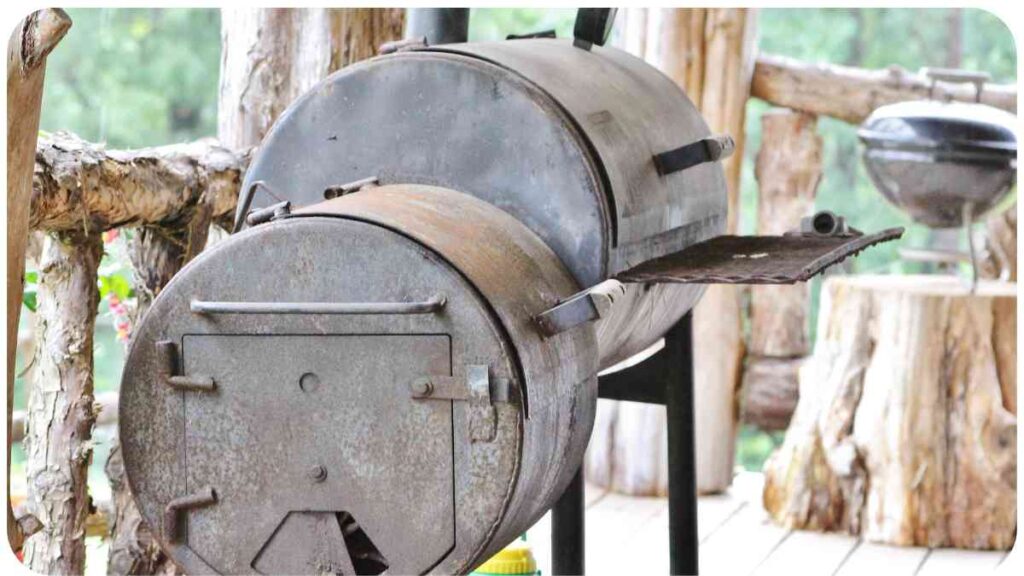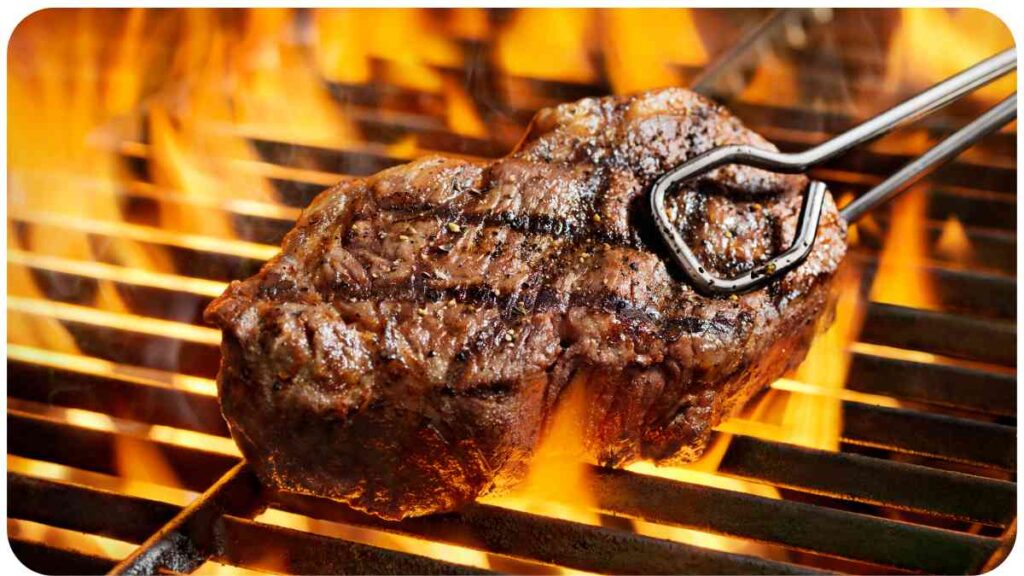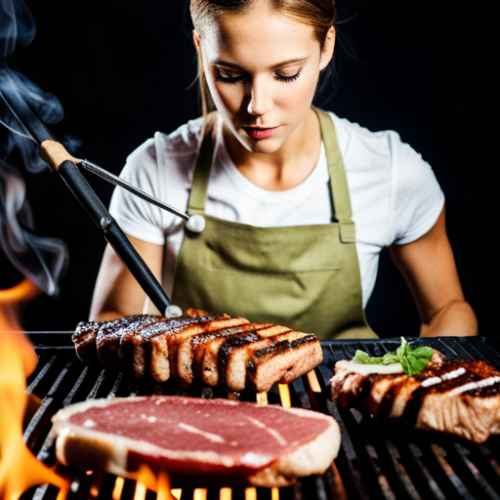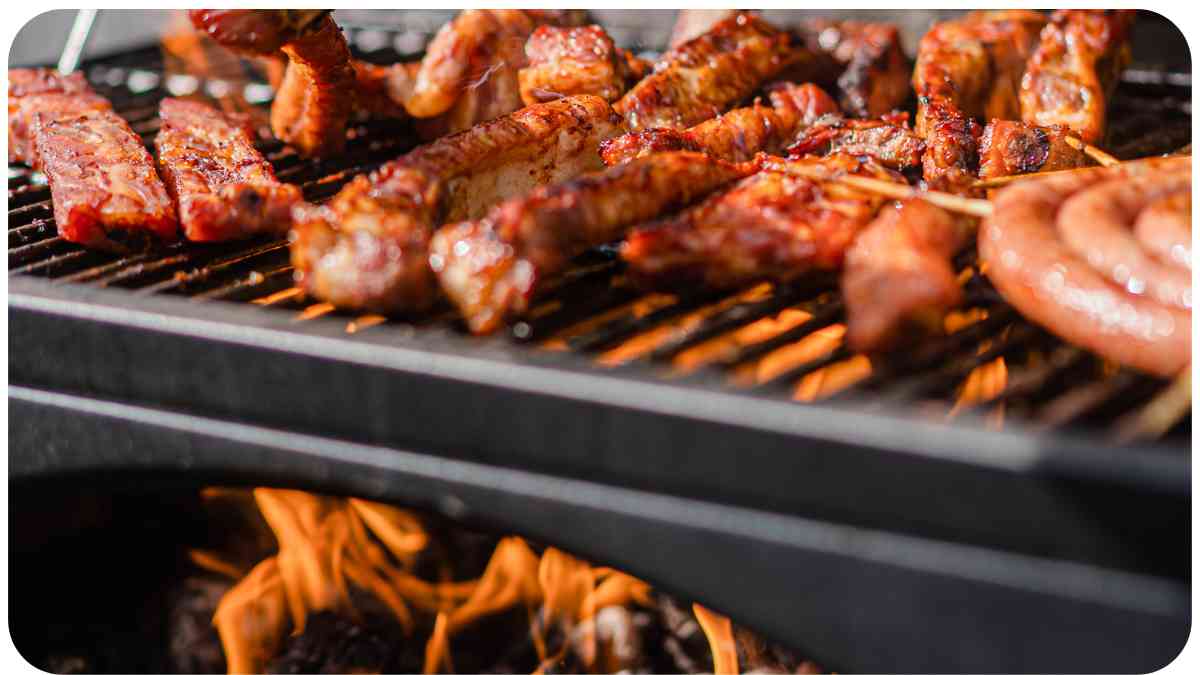If you’re a barbecue enthusiast who loves the rich flavors and aromas that come from low and slow smoking, you probably own an Oklahoma Joe Smoker. This iconic smoker has captured the hearts of backyard pitmasters for its exceptional performance and ability to infuse mouthwatering taste into meats.
However, like any piece of equipment, it can sometimes be a challenge to maintain the perfect smoking temperature. Fret not, because in this guide, I’ll walk you through the process of troubleshooting and fixing temperature regulation issues, drawing from my own experiences and expertise in the world of smoking.
| Takeaways |
| Mastering temperature control is crucial for successful smoking. |
| Understand the components of your Oklahoma Joe Smoker. |
| Identify and address common temperature regulation issues. |
| Gather essential tools and equipment for effective troubleshooting. |
| Follow a step-by-step guide to fix temperature issues. |
| Utilize expert tips like seasoning, the Minion Method, and wind considerations. |
| Troubleshoot and resolve problems like uneven heat distribution and excessive smoke. |
| Regular maintenance prevents future temperature issues. |
| Explore accessories like mods and temperature control systems. |
| Learn from real-life experiences of BBQ enthusiasts. |
| Mastery of temperature control enhances flavor and reputation. |
Understanding Your Oklahoma Joe Smoker

Before we dive into the nitty-gritty of fixing temperature issues, let’s take a moment to understand the anatomy of your Oklahoma Joe Smoker. This smoker consists of several key components, including the firebox, cooking chamber, chimney, and vents. Proper temperature regulation requires a harmonious interplay of these elements, ensuring consistent airflow and heat distribution.
Proper maintenance is key to a well-functioning grill. Neglecting it can lead to issues, affecting your cooking experience. Learn the importance of grill maintenance and avoid common pitfalls for a seamless grilling adventure.
Common Temperature Regulation Issues
Have you ever found yourself grappling with temperature fluctuations that seem to have a mind of their own? It’s a common struggle among pitmasters. Here are some typical issues you might encounter:
| Issue | Possible Causes | Solutions |
| Temperature Spikes and Drops | Airflow inconsistencies | Check vents, clean ash buildup, adjust dampers |
| Uneven Heat Distribution | Blocked airflow, improper setup | Rearrange meat placement, use heat deflector |
| Difficulty Reaching High Temperatures | Airflow restrictions | Clean vents and chimney, use dry fuel |
Tools and Equipment You’ll Need
Before embarking on your temperature-fixing journey, gather the following tools and equipment:
- Wire brush
- Grill gloves
- Probe thermometer
- Gasket sealant
- Fire-resistant silicone
- High-temperature tape
Having these essentials at hand will ensure you can address various issues effectively
A sparkling clean grill isn’t just for appearances—it’s crucial for optimal performance. Discover why cleaning your grill is essential and how this simple step can elevate your grilling game to new heights.
Step-by-Step Guide to Fixing Temperature Issues
5.1 Prepping Your Smoker
Start by giving your smoker a thorough cleaning. Remove any ash or debris from the firebox and cooking chamber. A clean smoker ensures better airflow and heat circulation, setting the stage for successful temperature control.
5.2 Checking for Airflow Obstructions
Adequate airflow is the cornerstone of temperature regulation. Inspect your smoker’s vents and chimney for blockages. Clear away any obstructions that might hinder the movement of air. You’ll be amazed at how this simple step can make a big difference in maintaining consistent temperatures.
Maintaining your grill’s peak condition involves more than just a quick wipe-down. Follow the ultimate grill maintenance checklist to ensure your grill stays in top shape, guaranteeing delicious results every time you cook.
5.3 Calibrating Thermometers
Accurate temperature readings are crucial. Calibrate your smoker’s built-in thermometers or invest in a reliable probe thermometer to ensure you’re getting precise readings. Hang the thermometer probes at grate level to monitor cooking temperature accurately.
5.4 Sealing Leaks and Gaps
Inspect your smoker for any leaks or gaps that could be allowing heat to escape. Leaks can disrupt temperature control and lead to energy wastage. Use gasket sealant, fire-resistant silicone, or high-temperature tape to seal these gaps and create a more airtight cooking environment.
5.5 Managing Fuel and Fire
Choose quality fuel for your smoker and maintain a consistent fire. Whether you’re using charcoal, wood, or a combination, the key is to create a steady burn. Arrange your fuel using techniques like the Minion Method to ensure a controlled and sustained fire that keeps your smoker humming at the desired temperature.
Grilling is an art, but even artists make mistakes. Uncover the most common grilling mistakes and how to avoid them to turn your next BBQ into a culinary masterpiece. Don’t let these pitfalls hinder your grilling expertise.
Expert Tips for Consistent Smoking
6.1 Seasoning Your Smoker
Before you dive into serious smoking, it’s a good idea to season your smoker. This process involves coating the interior with cooking oil and allowing it to heat up. Seasoning not only prevents rust but also contributes to temperature stability by creating a protective layer inside your smoker.
6.2 Using the Minion Method
The Minion Method, a favorite among seasoned pitmasters, involves placing a small number of hot coals atop a larger pile of unlit coals. This method results in a slow, gradual burn that can last for hours, maintaining a constant temperature without constant intervention.
6.3 Wind and Weather Considerations
Outdoor smoking can be influenced by wind and weather. Position your smoker in a sheltered area to minimize the impact of gusts. Wind can cause temperature fluctuations, so strategic placement can be a game-changer.
6.4 Importance of Patience
Smoking is an art that requires patience. Once you’ve made adjustments to your smoker, give it time to stabilize. Rapid changes can lead to overshooting your target temperature. Trust the process, and remember that slow and steady wins the race.
Vegetables deserve the spotlight on your grill too! Elevate your veggie game with practical tips for cooking vegetables on the Lynx Professional Grill. From perfect grilling times to enhancing flavors, make your vegetable dishes truly exceptional.
Troubleshooting Unresolved Issues
7.1 Uneven Heat Distribution
If you’re facing hot spots or uneven cooking, consider using a heat deflector. Placing a heat deflector between the firebox and cooking chamber can redirect heat and smoke, ensuring that your meats cook more evenly. Rotate your meat occasionally to further promote uniform cooking.
7.2 Excessive Smoke
While a bit of smoke is essential for flavor, excessive smoke can lead to bitter-tasting food. Make sure you’re using the right type and quantity of wood for smoking. Opt for hardwoods like oak, hickory, or fruitwoods, and avoid green or resinous woods that produce excessive smoke.
7.3 Dealing with Flare-ups
Flare-ups can result in charred exteriors and uneven cooking. When grease drips onto hot coals, it can cause flames to shoot up. Be prepared with a spray bottle filled with water to gently tame flare-ups without extinguishing the fire completely.
Maintenance and Preventive Measures
To avoid temperature issues in the future, incorporate regular maintenance into your smoking routine. Clean your smoker after each use to prevent ash buildup and check for wear and tear. A well-maintained smoker is more likely to provide consistent results.
Comparing Temperature Control Accessories
9.1 Oklahoma Joe Smoker Mods
Oklahoma Joe Smoker enthusiasts often develop custom modifications to enhance temperature control. These mods might include adding additional dampers, creating better seals, or installing aftermarket temperature control systems.
9.2 Third-Party Accessories
A variety of third-party accessories are available to help you achieve precise temperature control. From automatic temperature controllers to wireless thermometer systems, these accessories can make your smoking experience more convenient and enjoyable.
Real-Life Experiences from BBQ Enthusiasts

10.1 Sarah’s Smokin’ Success Story
Sarah, a devoted barbecue enthusiast, struggled with maintaining consistent temperatures on her Oklahoma Joe Smoker. After following the steps outlined in this guide, she achieved remarkable results. “It’s like a whole new world of smoking has opened up for me. My meats are perfectly cooked, and I can enjoy the process without constantly fretting over temperature swings.”
10.2 Mike’s Battle with Temperature Swings
Mike, another pitmaster, faced persistent temperature swings that left his smoked creations less than desirable. Through trial and error, he discovered that a combination of sealing gaps, using the Minion Method, and practicing patience turned the tide in his favor. “Now, I can confidently smoke a variety of meats, and my friends can’t get enough of the flavors.”
Advantages of Mastering Temperature Control
Mastery of temperature control not only leads to exceptional flavors but also boosts your confidence as a pitmaster. Consistently producing delectable smoked meats enhances your reputation among friends and family, turning you into the go-to expert for unforgettable barbecue gatherings.
Conclusion
In the world of smoking, mastering temperature control is the key to achieving barbecue excellence. By understanding your Oklahoma Joe Smoker, diagnosing common issues, and implementing effective solutions, you can transform your smoking experience from a struggle into a rewarding culinary adventure.
Remember, the road to perfect temperature regulation is a journey that combines expertise, experience, and a deep appreciation for the art of smoking. So, fire up your smoker, put these tips to the test, and let the delectable aromas of perfectly smoked meats fill the air. Your journey to barbecue greatness starts now!
Further Reading
For more in-depth information and insights on regulating smoker temperatures and enhancing your barbecue skills, check out these resources:
- Carnivore Style – How to Regulate Temperature in a Smoker: This comprehensive guide offers detailed steps and techniques to help you achieve precise temperature control while smoking your favorite meats.
- Smoking Meat Forums – Temperature Control for My Oklahoma Joe Longhorn: Dive into this discussion thread to learn from the experiences of other Oklahoma Joe Longhorn owners who have tackled temperature control challenges.
- Oklahoma Joe’s – Build and Manage the Perfect Fire: Explore this guide from the experts at Oklahoma Joe’s for valuable tips on building and maintaining the ideal fire for consistent and controlled smoking.
FAQs
How do I know if my Oklahoma Joe Smoker has a temperature issue?
If you notice significant temperature fluctuations, uneven cooking, or difficulty maintaining your desired temperature, it’s a sign that your smoker might have a temperature issue.
Can I use any type of wood for smoking?
While you can experiment with different types of wood, it’s recommended to use hardwoods like oak, hickory, or fruitwoods for optimal flavor. Avoid green or resinous woods that can produce excessive smoke.
Is it necessary to season my smoker before using it?
Yes, seasoning your smoker is essential. Seasoning involves applying cooking oil and heating the smoker to create a protective layer that prevents rust and contributes to temperature stability.
How can I prevent flare-ups during smoking?
To prevent flare-ups, be prepared with a spray bottle filled with water. Gently spray the flames to control flare-ups without extinguishing the fire completely.
Are there accessories that can help me control smoker temperature?
Yes, there are various accessories available, such as automatic temperature controllers and wireless thermometer systems, that can enhance your ability to regulate smoker temperature effectively. These accessories can provide convenience and accuracy during the smoking process.

Hi there! I’m Hellen James, and I’m a grilling enthusiast. I’ve been grilling for years, and I absolutely love it. I love how it brings people together and how you can feed your family with just a few minutes of work.

